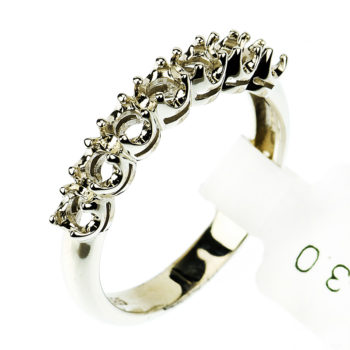When one of these statements is inaccurate, the financial implications are great. Here we’ll go over what exactly this miraculous document is, how to create one, and why it’s such an important part of accounting. Shaun Conrad is a Certified Public cash payment journal Accountant and CPA exam expert with a passion for teaching. After almost a decade of experience in public accounting, he created MyAccountingCourse.com to help people learn accounting & finance, pass the CPA exam, and start their career.
Once all the accounts are posted, you have to check to see whether it is in balance. Note that only active accounts that will appear on the financial statements must to be listed on the trial balance. If an account has a zero balance, there is no need to list it on the trial balance. You could also take the unadjusted trial balance and simply add the adjustments to the accounts that have been changed. In many ways this is faster for smaller companies because very few accounts will need to be altered.
The statement of retained earnings is prepared second to determine the ending retained earnings balance for the period. The statement of retained earnings is prepared before the balance sheet because the ending retained earnings amount is a required element of the balance sheet. The trial balance is at the heart of the accounting cycle—a multi-step process that takes in all of your business’ financial transactions, organizes them, and turns them into readable financial statements.
We’ll explain more about what an adjusted trial balance is, and what the difference is between a trial balance and an adjusted trial balance. Double-entry accounting (or double-entry bookkeeping) tracks where your money comes from and where it’s going. The adjustments need to be made in the trial balance for the above details. There are instances when companies end up missing out mentioning the transactions that have occurred in the bookkeeping records.
How to prepare an adjusted trial balance
Even though they are the same numbers in the accounts, the totals on the worksheet and the totals on the balance sheet will be different because of the different presentation methods. Unearned revenue had a credit balance of $4,000 in the trial balance column, and a debit adjustment of $600 in the adjustment column. Remember that adding debits and credits is like adding positive and negative numbers. This means the $600 debit is subtracted from the $4,000 credit to get a credit balance of $3,400 that is translated to the adjusted trial balance column. Looking at the asset section of the balance sheet, Accumulated Depreciation–Equipment is included as a contra asset account to equipment.
Marketing Consulting Service Inc. adjusts its ledger accounts at the end of each month. The unadjusted trial balance on December 31, 2015, and adjusting entries for the month of December are given below. Once all balances are transferred to the adjusted trial balance, we sum each of the debit and credit columns. The debit and credit columns both total $35,715, which means they are equal and in balance. Both the unadjusted trial balance and the adjusted trial balance play an important role in ensuring that all of your accounts are in balance and financial statements will reflect the most accurate totals.
When accounts are prepared at the end of the accounting period, ledger balances must be updated with relevant adjustments, which are the results of the partial transaction, improper transactions, and skipped transactions. Such types of transactions are deposits, Closing Stocks, depreciation, etc. Once all necessary adjustments are made, a new second trial balance is prepared to ensure that it is still balanced. To prove the quality of the total debit and credit balances, accountants prepare an adjusted trial balance. If you have to prepare one and don’t know where to start, we’ll share a few basics in this article to help you out. The above trial balance is a current summary of all of your general ledger accounts before any adjusting entries are made.
Adjusted Trial Balance vs Unadjusted Trial Balance
- In the latter case, the adjusted trial balance is critically important – financial statements cannot be constructed without it.
- The final total in the debit column must be the same dollar amount that is determined in the final credit column.
- Service Revenue had a $9,500 credit balance in the trial balance column, and a $600 credit balance in the Adjustments column.
- AccountEdge Pro includes an excellent selection of financial reports including a trial balance summary report and a trial balance detail report that provides details on all general ledger accounts currently being used.
- Its purpose is to ensure that the total amount of Debit Balance in the general ledger is equal to the total amount of Credit Balance in the general ledger.
If you’ve ever wondered how accountants turn your raw financial data into readable financial reports, the trial balance is how. The trial balance is a list of all your business’ ledger accounts, and how much each of those accounts changed over a particular period of time. You may have also heard it referred to as a trial balance sheet as it should be one worksheet summarizing all of your activity for a certain period in time. An adjusted trial balance is a listing of all company accounts that will appear on the financial statements after year-end adjusting journal entries have been made. Likewise, while the adjusted trial balance is used as the basis for the preparation of financial statements, the unadjusted trial balance usually cannot be used for such purpose.
Income Statement and Balance Sheet
As with the accounting equation, these debit and credit totals must always be equal. If they aren’t equal, the trial balance was prepared incorrectly or the journal entries weren’t transferred to the ledger accounts accurately. The adjusted trial balance is the key point to ensure all debits and credits are in the general ledger accounts how to handle customer complaints the right way balance before information is transferred to financial statements.
An adjusted trial balance is formatted exactly like an unadjusted trial balance. Three columns are used to display the account names, debits, and credits with the debit balances listed in the left column and the credit balances are listed on the right. With an adjusted trial balance, necessary adjusting journal entries are incorporated in the trial balance. In the above example, unrecorded liability related to unpaid salaries and unrecorded revenue amount has been included in the adjusted trial balance. It is useful to note that it is not a 100% guarantee that all the journal entries including adjusting entries are correctly posted and no omission is made when debits and credits are balanced in the adjusted trial balance.
If the debit and credit columns equal each other, it means the expenses equal the revenues. This would happen if a company broke even, meaning the company did not make or lose any money. If there is a difference between the two numbers, that difference is the amount of net income, or net loss, the company has earned. To get the numbers in these columns, you take the number in the trial balance column and add or subtract any number found in the adjustment column. There is no adjustment in the adjustment columns, so the Cash balance from the unadjusted balance column is transferred over to the adjusted trial balance columns at $24,800.
Since this is the first month of business for Printing Plus, there is no beginning retained earnings balance. Notice the net income of $4,665 from the income statement is carried over to the statement of retained earnings. Dividends are taken away from the sum of beginning retained earnings and net income to get the ending retained earnings balance of $4,565 for January.
Budgeting for employee salaries, revenue expectations, sales prices, expense reductions, and long-term growth strategies are all impacted by what is provided on the financial statements. Adjusted Trial Balance refers to the general ledger balances reflecting adjustments, which include accrued expenditure and non-cash expenses. The list and the balances of the company’s accounts are presented after the adjusting journal entries are made at the year-end. You could post accounts to the adjusted trial balance using the same method used in creating the unadjusted trial balance. The account balances are taken from the T-accounts or ledger accounts and listed on the trial balance. Essentially, you are just repeating this process again except now the ledger accounts include the year-end adjusting entries.
Company
Interest Receivable did not exist in the trial balance information, so the balance in the adjustment column of $140 is transferred over to the adjusted trial balance column. If we go back and look at the trial balance for Printing Plus, we see that the trial balance shows debits and credits equal to $34,000. At this point you might be wondering what the big deal is with trial balances.











